Will it be replaced by AI or "control" AI? This school in Chengdu is training “future teachers”
Author:Eve Cole
Update Time:2024-11-22 13:12:01
In the past year, the topic of artificial intelligence (AI) has penetrated into almost every aspect of our lives. Does education also face challenges from technological advancement? The answer is almost yes. Teachers were the first to encounter the test. In an interview, Tang Nengxuan, a Chinese language teacher born in the 1990s at the South District School of the Experimental Primary School Affiliated to Sichuan University, said: "When the school introduces the AI teacher evaluation system, as a teacher with rich teaching experience, he will still feel at a loss."
In the original classroom, the traditional binary structure of teachers and students is transforming into a triadic structure of teachers, machines and students due to the intervention of AI. Teachers not only have to change their thinking and integrate AI in class (exploration within a certain range), but they also have to undergo 360-degree "evaluation" without blind spots, and changes from lesson plans to teaching methods put pressure on teachers. In an industry that needs to be "people-oriented", how can teachers make machines become intelligent teaching assistants, learning companions, and mentors, learning and growing together with teachers and students? How can schools avoid overreliance on artificial intelligence and prevent teachers from losing their ability to make decisions and their unique human creativity? Coinciding with the 40th Teacher's Day, we focused on the reform of teachers' teaching and visited the Southern District School of the Experimental Primary School Affiliated to Sichuan University (referred to as the Southern District School), which has introduced smart scenes to the campus since the beginning of preparations in 2018, and tried to explore the new technologies that were pioneered. Whether the model can be learned and copied. Wuhou District is one of the first areas to be awarded the title of "National Smart Education Demonstration Zone", and its Southern District School is at the forefront and has become the first batch of demonstration schools. This identity directly gives the region a unique opportunity to directly and profoundly present the contradictions, challenges and opportunities of artificial intelligence in education in front of every educator, student and parent. AI comes to campus and "asks" teachers how to teach? It is reported that in 2018, Southern District School followed the educational concept of "Children matter" and built a "Children's Data Portrait" for each student, using data to describe the entire process of students' learning and growth, helping each child comprehensively and accurately explore their strengths. potential. 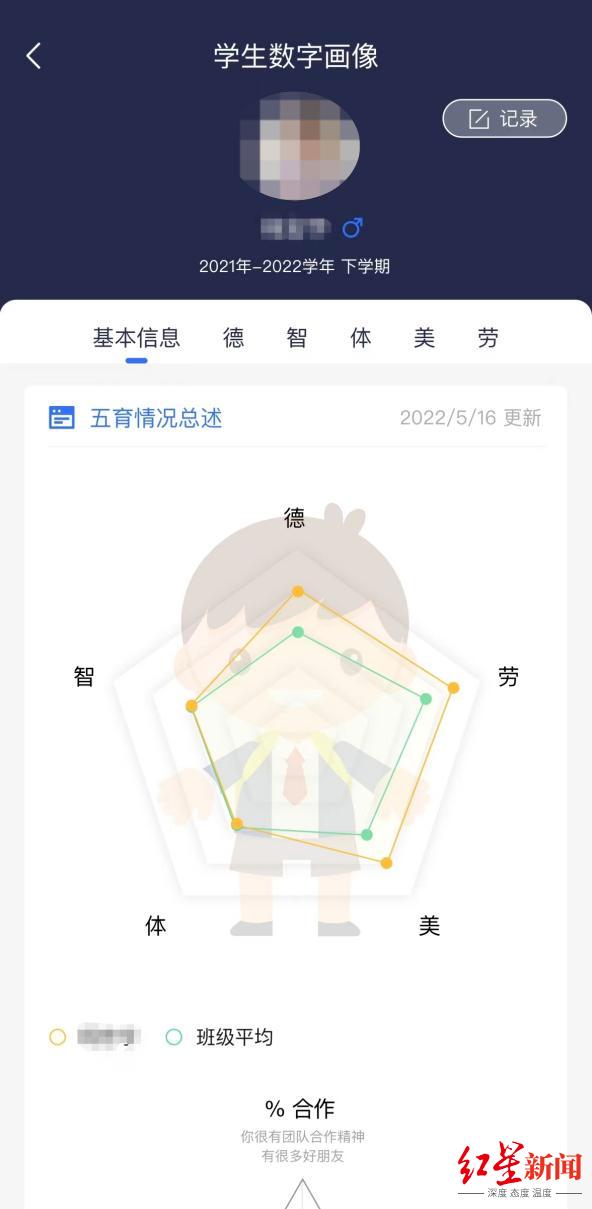
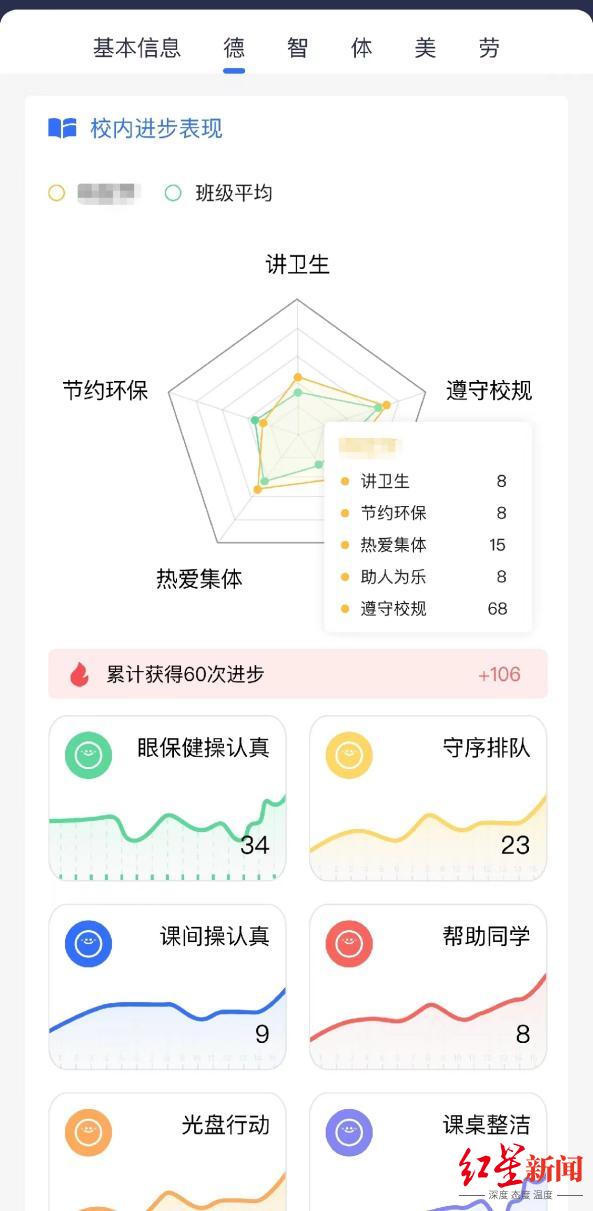

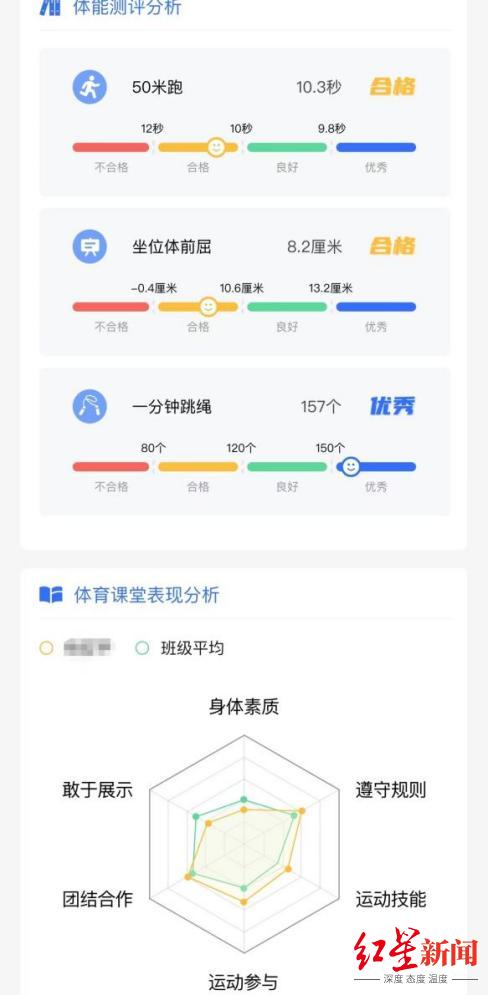
At the same time, a “teacher data portrait” was also constructed. Teacher Tang introduced that teacher portraits are divided into two aspects, one is for students’ moral education, and the other is applied to teachers’ classroom teaching abilities. Take the Maimeng system as an example. In a multimedia classroom in the South District School, a one-way glass partition separates the classroom next door. The teacher's teaching process is captured by the system and all aspects of the assessment are carried out. In another classroom, the teaching and research team can see the teacher's teaching process through a single-sided see-through curtain. Accepting AI's 360-degree "evaluation" without blind spots, the teacher's teaching plan content, lecture thinking, and even the tone of voice can be accurately captured by AI for analysis, statistics, and feedback. Last semester, the Maimeng system began to be implemented. The first reaction of Teacher Tang and many teachers was, "We are all afraid, because no one wants to expose their shortcomings in front of others." The question of how to change teachers' concepts about AI applications is The first challenge for Southern District schools to use AI. Jin Yan, the principal of the Southern District School, gave an encouraging idea: The essence of education is still "love" and "temperature". Regardless of students or teachers, schools need to correctly understand that behind teachers' concerns about new technologies is safety. The problem of insufficiency. Therefore, the school will repeatedly emphasize that cold data is not the only yardstick, and the introduction of AI is not to judge teachers, but to help teachers optimize their work. Jiang Lai, a teacher at the school affairs coordination center, believes that new technologies always ask the core questions - whether teachers have the confidence to improve their teaching methods, whether they can face their own limitations, work with AI, and combine rational data and Perceptual experience to optimize teaching methods. Teacher Tang became the first teacher to use the Maimeng system. He admitted that this system gave him a lot of inspiration and suggestions. "What impressed me most was the all-round tracking and capturing of cameras and microphones in the classroom, which can record everything the students and teachers say and do. After a class, the teachers seemed to have a third party who was more objective." With my eyes, I can see the status of my class, make targeted adjustments, and check for gaps. This was something I didn’t have before,” said Teacher Tang.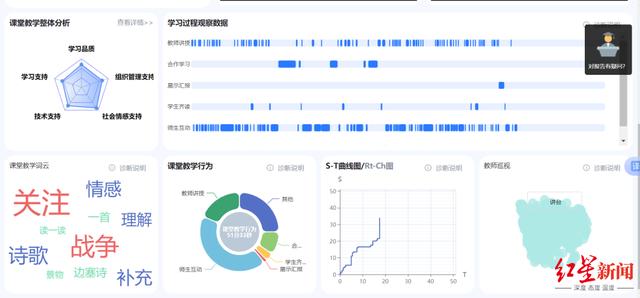
When we see that technology can really help us and improve teaching efficiency, changes are quietly happening in Southern District schools. First, several subject teachers "secretly" came to the multimedia classroom for testing after work. Then, a math teacher who was close to 50 years old and did not understand AI sneaked into the classroom. Finally, 12 teachers in the grade group tried the evaluation system and were willing to do so. Share experiences with each other and constantly bring new teaching models back to the classroom. If AI technology is like a "catfish" that is put into the classrooms and offices of Southern District schools, it will stir up not only the time investment of teachers of different ages, but also their true understanding of "technology, education, and talents." "Think deeply.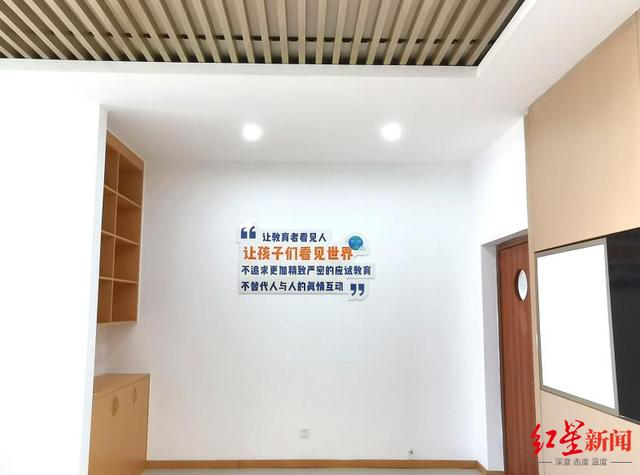
On the wall of this classroom, there is this sentence: "Let educators see people, let children see the world, do not pursue more refined and rigorous exam-oriented education, and do not replace the true interaction between people." "Education" needs People become creators who are not coerced by machines . Teachers have also encountered some troubles about how to better integrate AI into campus classrooms and truly play the role of intelligent teaching assistants, study companions or mentors. Fifth-grade teacher Liu Ya mentioned that because the AI response system is too sensitive, this also causes the robot to react to any message it receives in class, thus disturbing the order of the class. Teachers have made many rounds of attempts to this end. 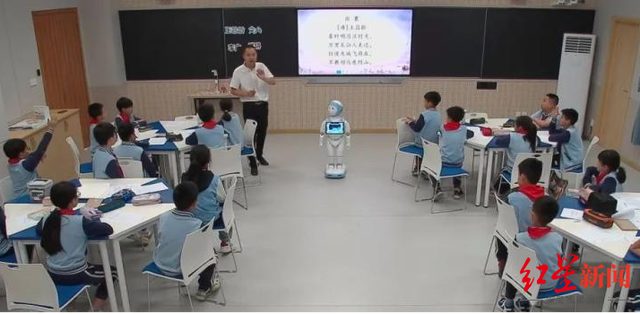
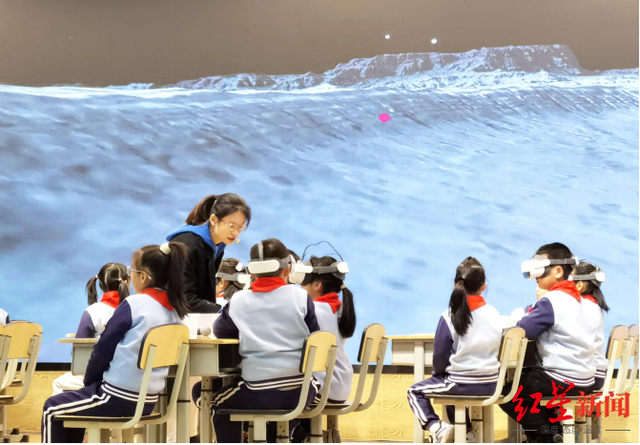
This problem also reflects that in the past, teachers' labor was individualized labor, but in Southern District schools with the intervention of information technology, teachers' teaching methods are shifting to team labor and collaborative teaching, using new technologies to make work more intelligent and innovative. ization, which further tests the innovative ability of teachers and the flexible adaptability of the school. How to achieve communication between technology and education?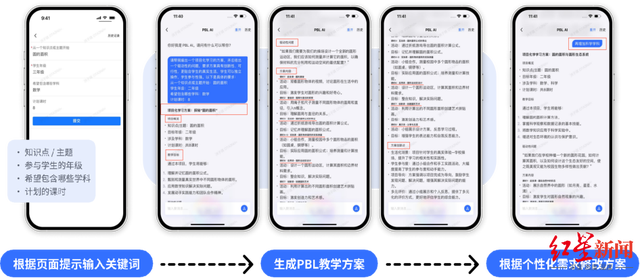
To this end, the school has established an innovative application group, which mainly serves as a bridge between the technical side and the educational side. During the process of applying AI, subject teachers can provide needs to the innovative application group at any time, and the group will communicate with the technical side according to the needs. Reintegrate again. "Yunshangnan District" ourschool is an integrated platform currently being used by the school. The platform integrates functions such as student evaluation and class evaluation, as well as digital portraits of students each semester. The teacher side also integrates some AI tools. Under the guidance of the new curriculum standards, art disciplines are moving toward comprehensive and applied practice. How to change the original single-subject teaching model and achieve learning changes? Music teacher Lu Lu said that the PBL robot integrated in the "Yunshang South District" can help her and teachers in the art group create interdisciplinary PBL teaching designs, reducing the "psychological burden" of launching new practices. The "tree hole" function of the platform was obtained from psychology teacher Wang Youchu. Teacher Wang You reported that parents seeking help from WeChat still feel traces are left behind and feel psychologically insecure.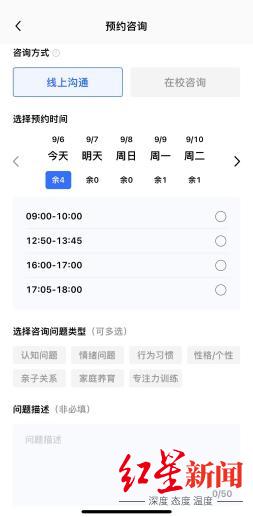
In order to make it easier for parents to find psychological teachers, psychological teachers can better collect various data. The innovative application team communicated with the technical side and developed the "Tree Hole" function. Parents can choose to communicate with psychological teachers anonymously, which not only ensures the privacy of parents and students, but also allows new technologies to follow them at all times. Flexibly adapt to actual educational needs to better serve students and teachers. AI helps teachers track student performance in the long term. After AI entered the Southern District School, the most intuitive feeling of Teacher Ning Lu is that her work efficiency has been significantly improved. When she encounters a difficult problem in teaching, she will seek help through AI to get more ideas for solving the problem. The AI+ teacher’s brain can help teachers reduce their workload and optimize their teaching skills over time, allowing them to spend more time focusing on education. "Personally, the biggest change is to break through the traditional classroom of Chinese teachers and let information technology enter the classroom." In the past, Chinese classes were more lecture-based, and student participation was not very high. Last semester, robots, iFlytek Spark models have entered Tang Nengxuan's classroom one after another. He found that if the traditional model is blindly applied, the efficiency will become lower. "Children today are very active in thinking, and a simple narrative class is not conducive to their development, so we have more Think more about how to improve classroom efficiency and how to better track students.”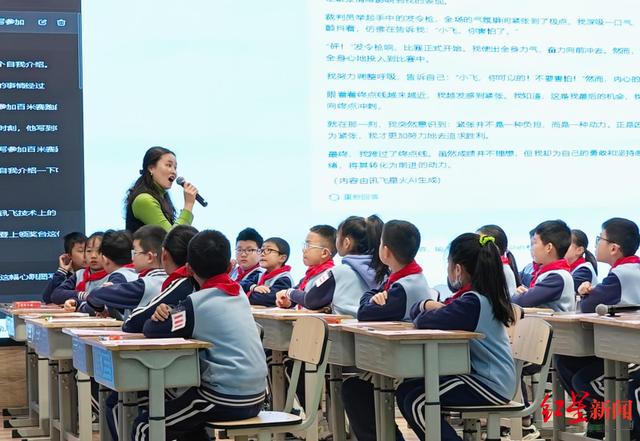
The digital portraits of children in "Yunshang South District" can evaluate students in nine dimensions from moral, intellectual, physical, artistic and labor aspects. At the end of each semester, a multi-dimensional table and graphics will be formed to show the children's every step in a semester. The specific performance of the sector. Now the school uses "child growth data portraits" to make it a case school for digital campus application scenarios in Sichuan Province. The children's data has been carefully designed into a "credit bank". In many learning activity scenarios, scores can be obtained for "deposits". The scores can be exchanged for "rights" in various courses or activities in the school. The school has specially set up a points mall "South". "Baoqi Fun Store" and so on, virtual points become real incentives and form new growth momentum. Teacher Peng Yingmei said with a smile: "This is self-discipline giving people freedom." "Smart data" not only enables "visualization" of children's growth, but also allows teachers to track students' performance in the long term and "leave traces" of education. When it’s time to do the “digital settlement,” children can go home with explicit recognition of redemption, making the data “perceivable.” "Through the platform's evaluation, we can communicate with parents in a more targeted manner, and observe and correct children's behavior in a long-term manner." said head teacher Tan Qiyue. Promote the improvement of teachers' teaching efficiency through artificial intelligence, continuously study the large amount of data generated by students' "teaching and learning", iterate "teaching and learning", and rely on the "digital base" to promote the digital transformation of schools. The Southern District School is on the way to In front of many schools. 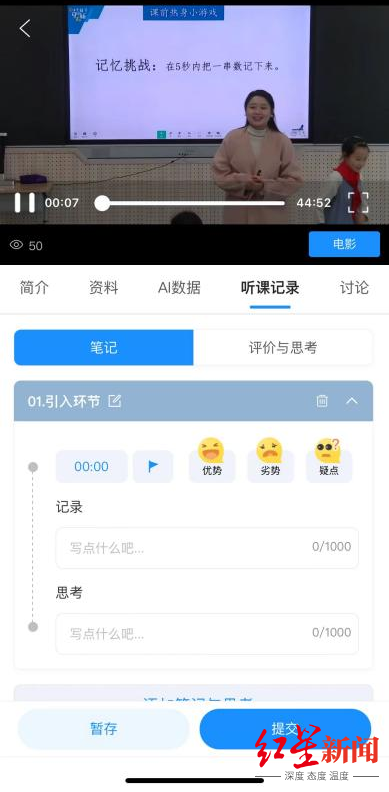

One of the school’s teaching and research methods is focused teaching and research. At present, 70% of the teachers in the school are born in the 90s and 00s. On the one hand, the teachers are young and there are still many problems that need to be improved in the classroom. Use focused teaching and research, and use AI technology based on problems to make focused changes. The other aspect is potential, and South District schools are developing a team of teachers who are young but capable of applying new skills. Liang Xueke from the Mathematics Teaching and Research Group believes that the biggest impact of the application of AI on individuals is to bring more thinking about the future direction of education. That is, facing the impact of AI, what kind of teacher will you become in the future? Behind the self-questioning are the self-expectations of the teachers in the Southern District schools. They maintain a sense of independence, constantly learn and adapt to new technologies, and seek ways to coexist and compete with them. There are many teachers in Southern District schools who have strong self-learning ability and driving force, like Teacher Tang, Teacher Ning, Teacher Lu, Teacher Wang, and Teacher Liang. They are like seeds of hope. In the process of surpassing artificial intelligence, they have also achieved self-evolution.













